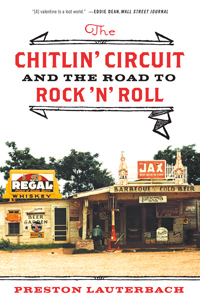While the circuit relied on black media for publicity, it received much of its operating revenue through the vice industry.
Circuit pioneer Walter Barnes got his start leading the band at Al Capone’s Cotton Club, pre-Depression, when Capone was one of several underworld supporters of swing.
The vice-chitlin’ circuit correlation went two ways with Denver Ferguson. Gambling both funded his chitlin’ circuit venture and influenced its conduct. Ferguson got rich operating a numbers racket in Indianapolis, and financed his talent agency, Ferguson Bros., with the proceeds. As the first real circuit mogul, running up to a dozen bands simultaneously throughout a network of under-kingpins across the map, Ferguson designed the circuit to function like his street lottery. He cultivated show promoters all over black America, who funneled the gate receipts of Ferguson’s band’s shows back to the boss. The numbers and circuit economy both worked on cumulative wealth.
As for the law, Denver developed a graft pay scale, correlating the amount of a police officer’s bribe to the officer’s rank. Elsewhere, protection payments and publicity-stunt raids kept the dice rolling.
Down in Houston, a Ferguson promoter named Don Robey ran a series of nightclubs that paid entertainers, but made their profits on liquor, cards, and dice. He became the most successful black record company owner, while exerting powerful influence behind the scenes to promote the small band blues that evolved into rock ‘n’ roll.
From Memphis, Tennessee, formidable nightclub owner Andrew “Sunbeam” Mitchell operated a multi-state goodtime empire, selling whiskey, women, and song from his Beale Street base throughout rural west Tennessee and down into Mississippi. Beginning in the late 1940s, he used emerging talents like Johnny Ace as his modern day medicine show pitchmen to draw crowds to buy his half-pints. Sunbeam himself was a championship card player, traveling around the South with fellow nightclub boss Harold “Hardface” Clanton, to play in Skin tournaments against other black playboys.
While the music biz has often been compared to organized crime, or said to be akin to it, they were basically one and the same on the chitlin’ circuit.
The Chitlin’ Circuit explores this underreported dynamic, spotlighting the importance of the underworld to the black pop music world.




